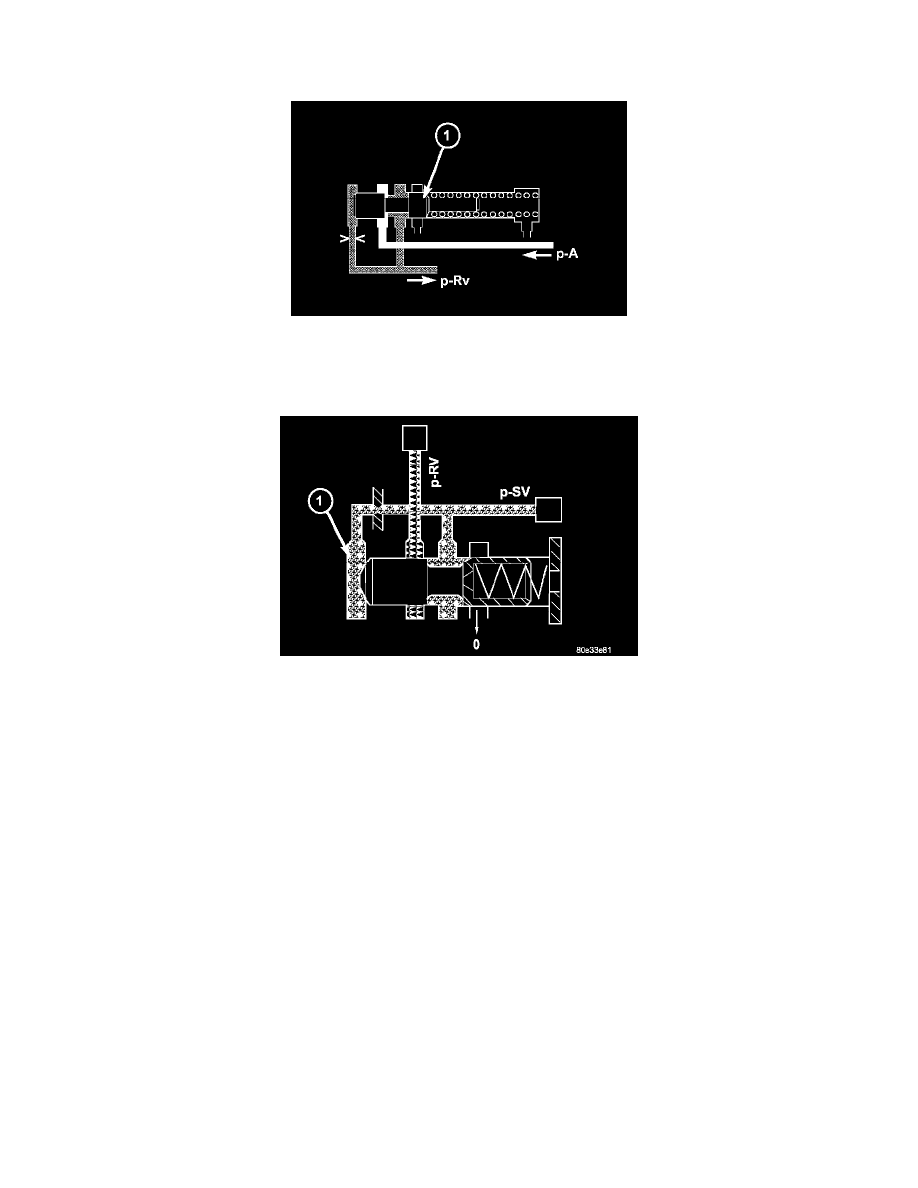Magnum V6-3.5L VIN V (2006)

the clutch K2 (1) is also present at the annular surface (2) of the shift pressure regulating valve (3). This reduces the shift pressure in 2nd gear.
Regulating Valve Pressure Regulating Valve
The regulating valve pressure (p-RV) is set at the regulating valve pressure regulating valve (1) in relation to the working pressure (p-A) as far as the
maximum pressure.
Shift Valve Pressure Regulating Valve
The non-constant regulating valve pressure (p-RV) is regulated to a constant shift valve pressure (p-SV) at the shift valve pressure regulating valve (1)
and is used to supply the 1-2 and 4-5 / 3-4 / 2-3 solenoid valves and the torque converter lockup clutch PWM solenoid valve.
Solenoid
SOLENOID
DESCRIPTION
The typical electrical solenoid used in automotive applications is a linear actuator. It is a device that produces motion in a straight line. This straight
line motion can be either forward or backward in direction, and short or long distance.
A solenoid is an electromechanical device that uses a magnetic force to perform work. It consists of a coil of wire, wrapped around a magnetic core
made from steel or iron, and a spring loaded, movable plunger, which performs the work, or straight line motion.
The solenoids used in transmission applications are attached to valves which can be classified as normally open or normally closed. The normally
open solenoid valve is defined as a valve which allows hydraulic flow when no current or voltage is applied to the solenoid. The normally closed
solenoid valve is defined as a valve which does not allow hydraulic flow when no current or voltage is applied to the solenoid. These valves perform
hydraulic control functions for the transmission and must therefore be durable and tolerant of dirt particles. For these reasons, the valves have
hardened steel poppets and ball valves. The solenoids operate the valves directly, which means that the solenoids must have very high outputs to close
the valves against the sizable flow areas and line pressures found in current transmissions. Fast response time is also necessary to ensure accurate
control of the transmission.
The strength of the magnetic field is the primary force that determines the speed of operation in a particular solenoid design. A stronger magnetic field
will cause the plunger to move at a greater speed than a weaker one. There are basically two ways to increase the force of the magnetic field:
1. Increase the amount of current applied to the coil or
2. Increase the number of turns of wire in the coil.
The most common practice is to increase the number of turns by using thin wire that can completely fill the available space within the solenoid
housing. The strength of the spring and the length of the plunger also contribute to the response speed possible by a particular solenoid design.
A solenoid can also be described by the method by which it is controlled. Some of the possibilities include variable force, pulse-width modulated,
constant ON, or duty cycle. The variable force and pulse-width modulated versions utilize similar methods to control the current flow through the
solenoid to position the solenoid plunger at a desired position somewhere between full ON and full OFF. The constant ON and duty cycled versions
control the voltage across the solenoid to allow either full flow or no flow through the solenoids valve.
